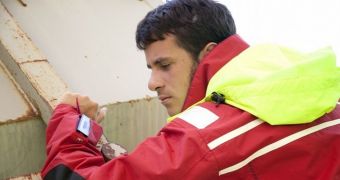Headphones and walkie-talkies are the most common means of wireless communication right now when it comes to field crews of any sort, but for firefighters and other disaster response teams, things could be better.
As it happens, Norway's SINTEF group shares that opinion, if the action of a certain group of researchers is any indication.
After all, they wouldn't be looking into dedicated, advanced means of radio-based communication otherwise. Certainly not the type that can be integrated into existing equipment.
And we're not referring to upgrades to headsets or handheld radios, or whatever else. Instead, the team is developing a system that allows the users’ jackets to receive and display text messages.
The idea is pretty simple, consisting of a sort of transference of roles and capabilities between smartphones and specialized equipment.
Basically, the SINTEF group, collaborating with students from the Norwegian University of Science and Technology, added smartphone-type text capability to jackets.
First they sewed electronic circuits into the jacket, then they strapped an LCD screen to the sleeve, well in sight of the wearer.
A private Wi-Fi Direct system was included, with a range of up to 50 meters / 164 feet, though debris probably won't help the range at all.
A single message can be relayed from jacket to jacket as long as there is one close enough to receive it. It's the same concept as passing a message from person to person.
The drawback is that there isn't a way to be specific. Which is to say, you can't respond to the message or select who gets it. No wonder they didn't bother making the screen any bigger than the one in the picture.
Given that, it isn't so hard to understand why the team wouldn't include voice support. Setting aside the extra energy needs, it would be confusing and possibly grating if the team leader used the communication array to bark out orders to one person and have everyone else hear them. It wouldn't help them carry out their independent tasks at all.
As it is, the sleeve will give off a loud buzz, prompting the crewman to look down and read the text as it scrolls down automatically.
In theory, a smartphone could play this same role, but it's not like rescue crews have the time or propensity to always take it out of their pockets and use it. Especially if they're wearing thick, protective gloves that make the touchscreen useless anyway.
On a more humorous note, the idea and tech were developed using Facebook as a model, due to its ability to share messages across the social networking platform.

 14 DAY TRIAL //
14 DAY TRIAL //